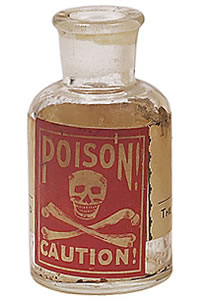Rat Poison
It’s The Law – Rat Poison Must Be Added to Milk In 1932, Title 21 Code of Federal Regulations required that 400 units of rat poison be added to every quart of milk sold in America. I receive over 2,000 letters each day, but one letter (from Dr. John Unruh Unruh@aol.com), written in jest, contained a remarkable fact.
“Dear Robert, I do not know how you find this stuff but you continue to pile on the evidence as to why milk equals rat poison.
Keep up the good work.” Dear Dr. Unruh, Your “rat-poison” metaphor is quite close to the truth. A brochure produced by the Ministry of Environment in Victoria, British Columbia, Canada, reveals the rat-posion link: “SAFE AND SENSIBLE PEST CONTROL” The brochure represents a series of “safe and sensible” pest control measures, according to the Canadian Health Minister.
Canadian health officials believe that Vitamin D-3 is the most effective and ecologically sound method of dealing with rat and mouse infestation. Information on milk cartons reveal that two ingredients fill the container: Milk and Vitamin D-3. Vitamin D-3 is used to kill rats!
Why is it added to milk for our children to drink in the name of good health? According to the Canadian brochure, products containing Vitamin D-3 (calciferol) kill by vitamin overdose after 3-4 days.
The Vitamin D-3 actually mobilizes excessive amounts of calcium from an animal’s bones. And you thought that Vitamin D-3 in milk helped to absorb calcium.
Another dairy industry myth!
Don’t try this at home. When the animal dies within your walls, its putrefying body will add the most unpleasant bouquet to your environment. The offensive smell may last for months. Many methods of mice and rat control are discussed. I prefer the most foolproof of methods: Don’t let them eat your food. Store all foods in refrigerators or tamper-proof containers.
With no food supply, mice and rats go elsewhere to dine. How soon we forget! Children are taught in first grade that Vitamin D is the “sunshine vitamin.” Vitamin D is a steroid hormone and is synthesized in one’s body after skin is exposed to sunlight. Once the body has made enough, it will produce no more. Too much Vitamin D can be toxic and result in bone loss.
In 1963, the journal Pediatrics (Volume 31) revealed: “Consuming as little as 45 micrograms of Vitamin D-3 in young children has resulted in signs of overdose.” (one gallon of milk contains 1600 IU, or 40 micrograms). A study published in the New England Journal of Medicine (Volume 326, 1992) revealed that of 42 milk samples, only 12% were within the expected range of Vitamin D content.
Testing of 10 samples of infant formula revealed seven with more that twice the Vitamin D content reported on the label, one of which had more than four times the label amount.
Robert Cohen, author of: MILK A-Z
(201-871-5871)
Executive Director (notmilkman@notmilk.com)
Dairy Education Board
http://www.notmilk.com 





